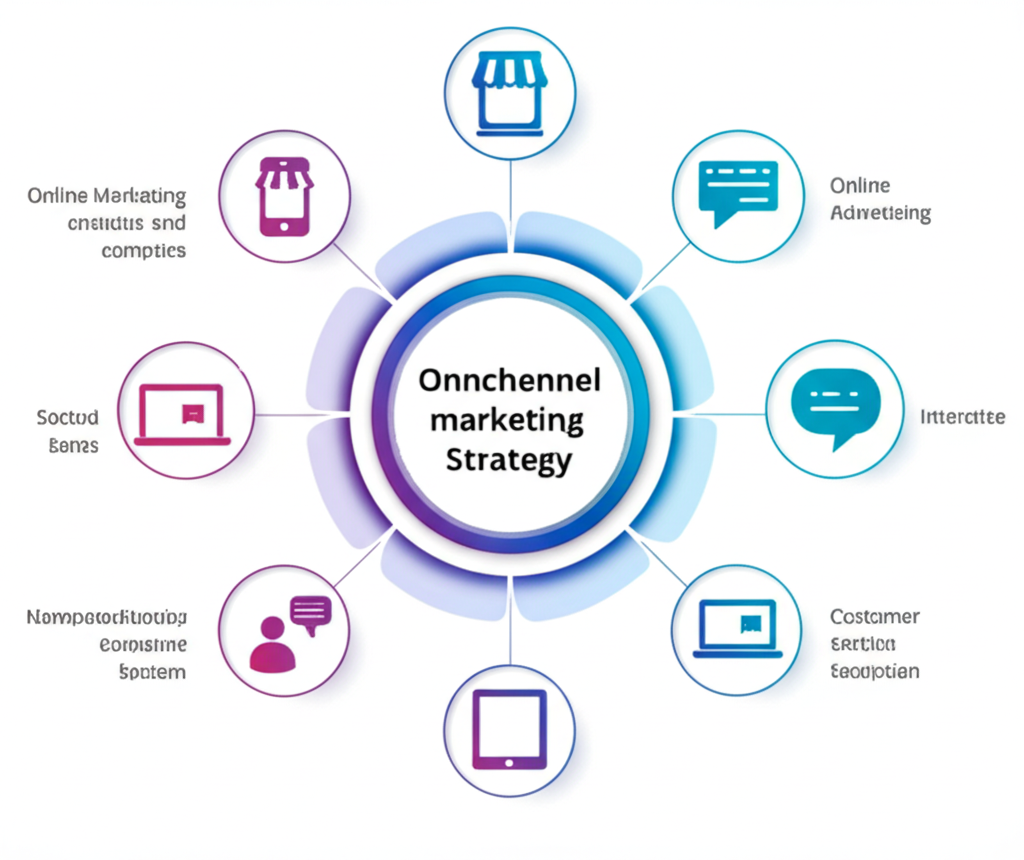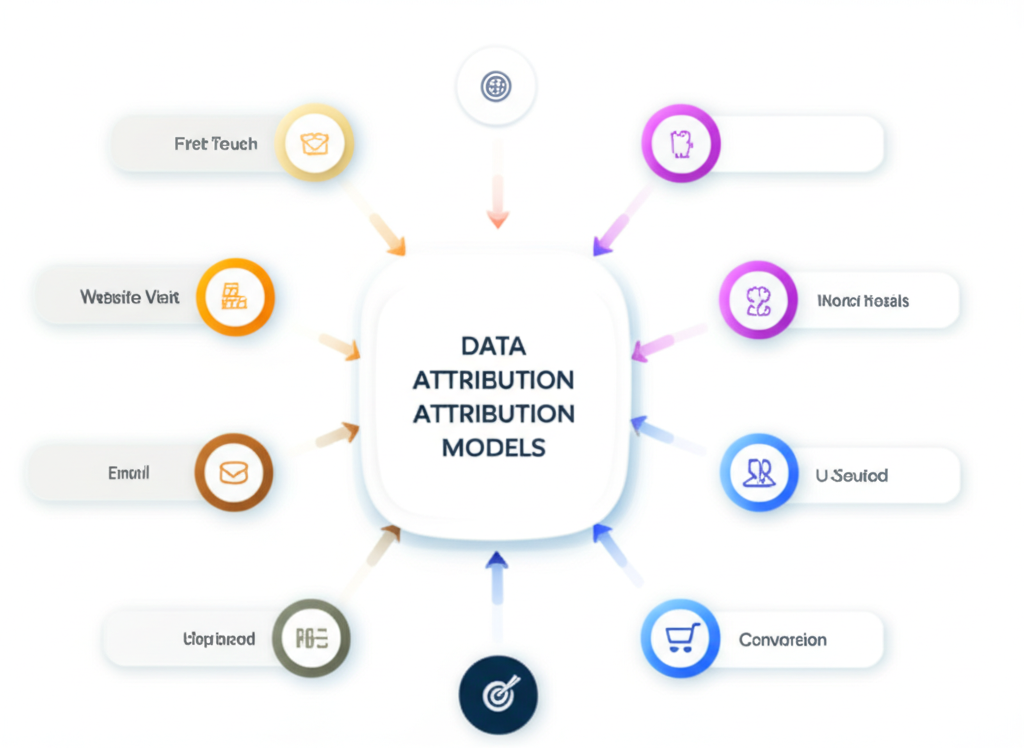Data-Driven Decision Making in Digital Marketing

Introduction
In the rapidly evolving landscape of digital marketing, gut feelings and intuition are no longer sufficient for making strategic decisions. Today's most successful marketers rely on data-driven approaches that leverage analytics tools and methodologies to inform their strategies, optimize campaigns, and drive measurable results. This shift towards data-driven decision making has transformed marketing from an art into a science, where hypotheses are tested, results are measured, and strategies are continuously refined based on empirical evidence.
The Foundation: Building a Data-Driven Culture
Before diving into specific tools and techniques, it's essential to establish a data-driven culture within your marketing team or organization. This culture shift begins with leadership commitment and extends to every team member involved in marketing activities. Key elements of a data-driven culture include:
- Curiosity and questioning: Encouraging team members to ask "why" and seek evidence rather than accepting assumptions
- Hypothesis-driven thinking: Approaching marketing initiatives as experiments with clear hypotheses to test
- Comfort with failure: Recognizing that not all experiments will succeed, but all provide valuable learning opportunities
- Continuous learning: Investing in ongoing education about analytics tools, methodologies, and best practices
- Cross-functional collaboration: Breaking down silos between marketing, data science, and other departments
By fostering these cultural elements, organizations create an environment where data-driven decision making can flourish.
Essential Analytics Tools and Platforms
The modern marketer has access to an unprecedented array of analytics tools and platforms. While the specific tools you choose will depend on your organization's needs and resources, several categories of tools are essential for data-driven marketing:
Web Analytics Platforms
Tools like Google Analytics 4 (GA4), Adobe Analytics, and Matomo provide insights into website performance, user behavior, and conversion paths. These platforms help marketers understand how users interact with their digital properties, which content resonates, and where conversion bottlenecks occur.
GA4, in particular, represents a significant evolution in web analytics, with its event-based data model and enhanced machine learning capabilities. Unlike its predecessor, Universal Analytics, GA4 is designed to work across platforms and provides a more complete view of the customer journey.
Marketing Attribution Tools
Attribution tools help marketers understand which touchpoints and channels contribute to conversions. Solutions range from built-in attribution models in advertising platforms to sophisticated multi-touch attribution (MTA) systems that use advanced statistical methods to allocate credit across the customer journey.
More advanced organizations may implement marketing mix modeling (MMM) alongside MTA to gain a comprehensive view of marketing effectiveness across both digital and traditional channels.
Customer Data Platforms (CDPs)
CDPs unify customer data from multiple sources to create a single, comprehensive view of each customer. This unified data can then be activated across marketing channels for personalized messaging and experiences. Leading CDPs include Segment, Tealium, and Adobe Real-Time CDP.
By centralizing customer data, CDPs enable marketers to move beyond channel-specific metrics to focus on customer-centric measurements like lifetime value, retention, and cross-channel engagement.
Business Intelligence (BI) Tools
BI tools like Tableau, Power BI, and Looker allow marketers to visualize data, create custom dashboards, and perform ad-hoc analyses. These tools are essential for democratizing data access within marketing teams and enabling non-technical users to explore data and generate insights.
Modern BI platforms also offer advanced capabilities like natural language querying, automated insights, and predictive analytics, making sophisticated analysis accessible to a broader range of users.
Key Metrics and KPIs for Data-Driven Marketing
Effective data-driven marketing requires focusing on the right metrics and key performance indicators (KPIs). While specific metrics will vary based on business objectives, several categories of measurements are universally important:
Acquisition Metrics
These metrics track how effectively you're attracting new prospects and customers:
- Traffic by source/medium
- Cost per acquisition (CPA)
- Click-through rate (CTR)
- Conversion rate by channel
- Return on ad spend (ROAS)
Engagement Metrics
Engagement metrics measure how users interact with your content and digital properties:
- Time on site/page
- Pages per session
- Scroll depth
- Video completion rate
- Social engagement (likes, shares, comments)
Conversion Metrics
These metrics track how effectively you're converting prospects into customers:
- Conversion rate by segment
- Cart abandonment rate
- Lead-to-customer conversion rate
- Average order value
- Checkout completion rate
Retention and Loyalty Metrics
These metrics measure customer loyalty and long-term value:
- Customer lifetime value (CLV)
- Repeat purchase rate
- Churn rate
- Net promoter score (NPS)
- Customer satisfaction score (CSAT)
Implementing a Data-Driven Decision-Making Framework
With the right culture, tools, and metrics in place, marketers can implement a structured framework for data-driven decision making. This framework typically includes the following steps:
1. Define Clear Objectives
Begin by establishing clear, measurable objectives that align with broader business goals. These objectives should be specific, measurable, achievable, relevant, and time-bound (SMART). For example, rather than setting a vague goal like "increase website traffic," a SMART objective would be "increase organic traffic from high-value segments by 25% within six months."
2. Establish Baseline Measurements
Before implementing new strategies or campaigns, establish baseline measurements for relevant metrics. These baselines provide a point of comparison for evaluating the impact of your initiatives. Ensure that your measurement methodology is consistent and that you account for seasonal variations or other external factors that might influence results.
3. Develop and Test Hypotheses
Formulate clear hypotheses about how specific actions or changes might impact your key metrics. For example, "Implementing personalized product recommendations will increase average order value by at least 10%." Design experiments to test these hypotheses, using techniques like A/B testing, multivariate testing, or controlled rollouts.
4. Analyze Results and Extract Insights
Once you've collected sufficient data from your experiments, analyze the results to determine whether your hypotheses were supported. Look beyond surface-level metrics to understand the underlying factors driving performance. Segment your data to identify patterns and insights that might not be apparent in aggregate measurements.
5. Implement and Scale Successful Strategies
Based on your analysis, implement successful strategies at scale while continuing to monitor performance. Be prepared to make adjustments as needed based on ongoing measurement and feedback. Document your findings and share insights across the organization to build institutional knowledge.
6. Continuously Optimize and Iterate
Data-driven marketing is an ongoing process of testing, learning, and refining. Continuously identify new opportunities for optimization and develop new hypotheses to test. As you gather more data and insights, refine your targeting, messaging, and channel strategies to improve performance over time.
Case Study: E-commerce Retailer Transformation
A mid-sized e-commerce retailer struggling with declining conversion rates and increasing customer acquisition costs implemented a data-driven approach to marketing decision making. The company began by consolidating customer data from multiple sources into a unified customer data platform, enabling a comprehensive view of the customer journey across touchpoints.
Using this unified data, the marketing team identified several key insights:
- Mobile users had significantly higher cart abandonment rates than desktop users, particularly during the payment step
- Customers who engaged with product videos were 3x more likely to purchase than those who didn't
- Email campaigns performed significantly better when sent based on user behavior triggers rather than on a fixed schedule
Based on these insights, the team developed and tested several hypotheses:
- Simplifying the mobile checkout process would reduce cart abandonment
- Prominently featuring product videos would increase conversion rates
- Implementing behavior-based email triggers would improve engagement and conversion
After testing these hypotheses through controlled experiments, the company implemented the successful strategies at scale. The results were impressive: a 35% reduction in mobile cart abandonment, a 28% increase in overall conversion rate, and a 45% improvement in email campaign performance. These improvements contributed to a 22% increase in revenue and a 15% reduction in customer acquisition costs over six months.
Challenges and Considerations
While data-driven marketing offers significant benefits, it also presents several challenges that organizations must address:
Data Quality and Integration
Poor data quality or siloed data systems can undermine even the most sophisticated analytics efforts. Organizations must invest in data governance, integration, and quality assurance to ensure that marketing decisions are based on accurate, comprehensive information.
Privacy and Compliance
With increasing privacy regulations like GDPR, CCPA, and the phasing out of third-party cookies, marketers must adapt their data collection and usage practices. This includes implementing consent management, adopting privacy-by-design principles, and exploring privacy-preserving analytics techniques.
Balancing Data and Creativity
While data should inform marketing decisions, it shouldn't stifle creativity or innovation. The most effective marketing organizations find a balance between data-driven optimization and creative exploration, recognizing that breakthrough ideas often come from thinking beyond what current data suggests.
Skill Gaps and Training
Many marketing teams lack the analytical skills needed for sophisticated data analysis. Organizations must invest in training existing staff, hiring specialists, or partnering with analytics experts to build the necessary capabilities.
Conclusion
Data-driven decision making has transformed marketing from an intuition-based discipline to a rigorous, evidence-based practice. By leveraging analytics tools, focusing on the right metrics, and implementing a structured decision-making framework, marketers can optimize their strategies, improve performance, and demonstrate clear ROI for their initiatives.
The journey to data-driven marketing is ongoing, requiring continuous learning, experimentation, and adaptation. Organizations that commit to this approach gain a significant competitive advantage, as they can respond more quickly to changing market conditions, identify emerging opportunities, and allocate resources more effectively.
As marketing technology continues to evolve, with advances in artificial intelligence, machine learning, and predictive analytics, the potential for data-driven marketing will only increase. Forward-thinking marketers are already exploring how these technologies can enhance their decision-making capabilities, enabling even more personalized, efficient, and effective marketing strategies.


